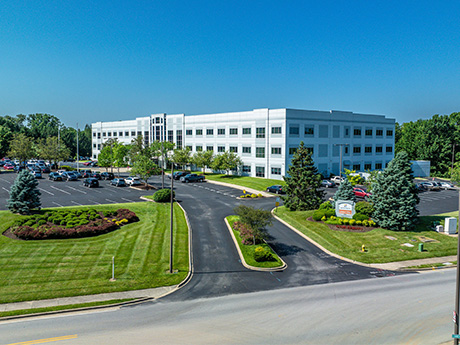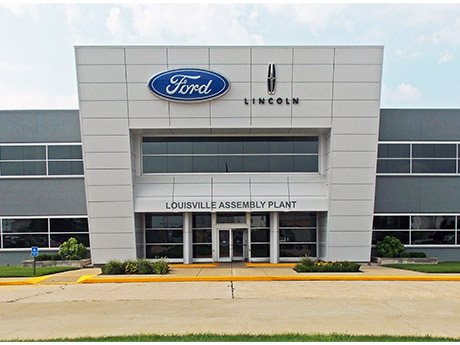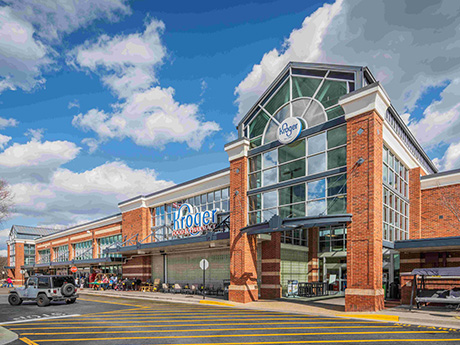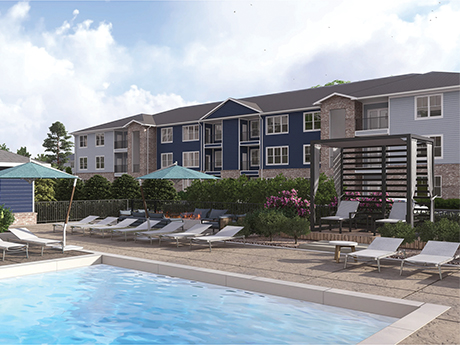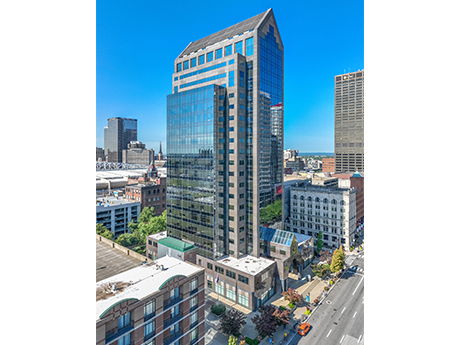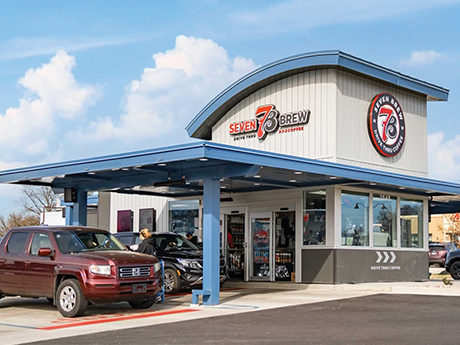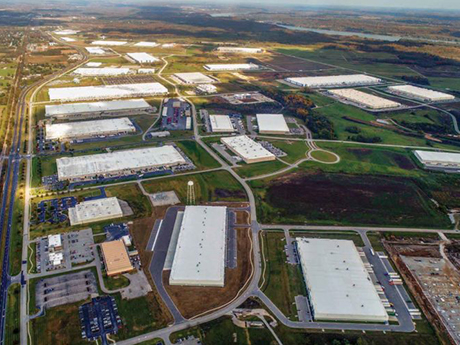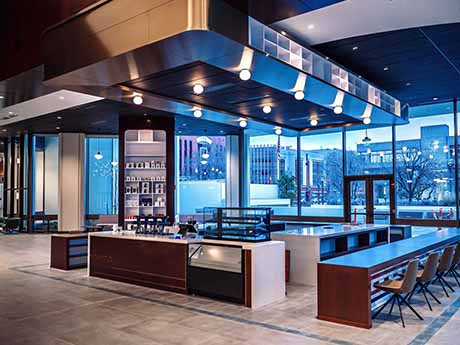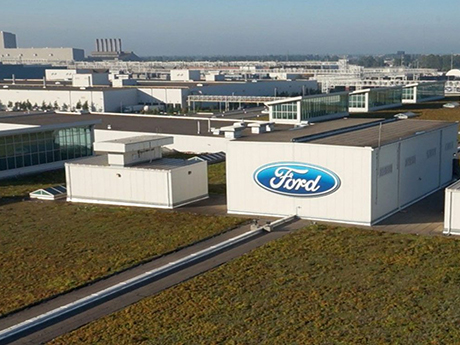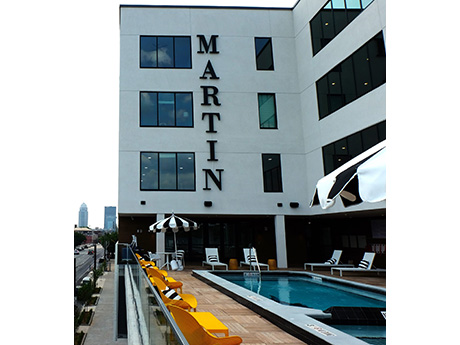Louisville is a city full of history, charm and grit. We’re the birthplace of Muhammad Ali, home to the Kentucky Derby and the heart of America’s bourbon culture. As our city has grown, so have its business opportunities. Louisville’s geographic location, its logistics network and its diversified economy have attracted significant investment from global businesses to set down roots in recent years. In 2023, Louisville was named as a top 5 U.S. metro for economic development by Site Selection magazine with over $1 billion in capital investment and 2,300 new jobs that year alone. Louisville’s overall commercial real estate market has grown along with the population, but the office market has had a softer rebound following the pandemic than other markets nationally. Office overview In second-quarter 2025, Louisville had over 235,000 square feet of positive office leasing activity that was negated by over 256,000 square feet of negative net absorption, primarily due to large move-outs from office users in the city’s suburban submarkets. Leasing activity in Louisville’s Central Business District (CBD) has rebounded. In the second quarter, the submarket saw over 6,100 square feet of net positive absorption from Class A leasing activity, including the Jefferson County Sheriff’s Office lease …
Market Reports
Louisville’s industrial market stands out as a steady force, resisting the fluctuations often seen in surrounding Midwest cities such as Cincinnati, Columbus and St. Louis. Midyear figures show Louisville’s year-over-year rent growth exceeding the national percentage and its vacancy rate 340 basis points below the national rate, both signs of a healthy market. Additionally, Louisville’s recognition in national trade publications and recent announcements of General Electric/Haier and Ford’s electric vehicle (EV) investment at its Louisville Assembly Plant suggests positive future job growth. A sturdy foundation Louisville’s centralized location has helped secure its place as a major logistical powerhouse and develop relationships with major industrial business players such as UPS, Ford and General Electric. UPS announced its first expansion into Louisville in 1981 and has continued to grow its operations since, including the recently opened $100 million automated medical labs shipping facility. Ford also continues to invest in Louisville, recently leasing a 567,433-square-foot facility in Southern Indiana and a 426,300-square-foot facility in Louisville’s Bullitt County submarket just south of Louisville Muhammad Ali International Airport. Additionally, General Electric/Haier will move washer/dryer manufacturing processes to Louisville, creating 800 new jobs and confirming Haier’s Louisville manufacturing operations as its global hub. A resilient market …
Louisville’s retail market continues to show strength in 2025, with grocery anchors driving much of the momentum. Despite national headwinds such as moderating rent growth and elevated construction costs, the metro has proven resilient, posting a vacancy rate of just 3.5 percent, outperforming the national benchmark of 4.8 percent, according to CoStar Group. Asking rents averaged $17.42 per square foot, reflecting steady demand across the region. At the center of this activity are grocers like Kroger, Publix and BJ’s Wholesale Club, each reshaping Louisville’s retail landscape in unique ways. Kroger is deepening its footprint with multiple new stores, including a 123,000-square-foot location under construction on Beulah Church Road that is scheduled to open in 2026. Publix, one of the most closely watched entrants to the Kentucky market, has expanded aggressively after opening its first store, securing 60,000 square feet at Blankenbaker Plaza and 56,000 square feet at Prospect Point. BJ’s Wholesale Club has adopted a redevelopment approach, razing the former Sears building at Jefferson Mall to deliver a 104,000-square-foot store that opened earlier this year. Collectively, these projects underscore the draw of essential, needs-based retail while fueling complementary leasing activity in their surrounding trade areas. Concepts gaining ground That momentum …
Amidst economic uncertainty, Louisville stands out for its resilience, establishing itself as a stalwart in today’s market. According to Apartments.com, Louisville ranked No. 1 in the nation for rent growth in the second quarter of 2024. Factors such as Louisville’s non-cyclical job growth, expanding industries including EV production and the burgeoning River Ridge project in Southern Indiana all contribute to its growth. When we inspect the data, we see a basic yet fundamental market factor at play: supply and demand. Louisville’s supply is low relative to the growth in renters, resulting in upward pressure on rents despite a nationwide market that is largely declining. Supply dynamics The bulk of Louisville’s development pipeline is concentrated in Southern Indiana, with 1,039 units under construction in the Jeffersonville submarket. The Southern Indiana region has experienced solid growth with over 10,500 incoming jobs due to the economic activity from River Ridge. River Ridge Commerce Center reported an economic impact of $2.93 billion for calendar year 2023, up over $2.7 billion compared with 2022, according to Inside INdiana Business. Notable development projects in Southern Indiana include: • The Flats on 10th, 3300 Schosser Farm Way (300-units by Schuler Bauer Real Estate) • The Warren, 4501 …
The Louisville office market is at an interesting crossroads, to say the least. Historically, the sector has always skewed toward the suburban submarkets as east Jefferson County has been the go-to area for companies looking for office space. Over the past few years, the shift to the suburbs has become more pronounced than ever as Louisville’s office market experiences a dramatic contrast between the current state of the overall office market in the suburbs versus the central business district (CBD). In the suburban markets, the premier office buildings are experiencing low vacancy rates and record-setting growth in rental rates. On the opposite side, the CBD continues to struggle with increases in vacancy rates, which is expected to increase in the coming months. This trend reflects overall national office trends as companies focus on new, highly amenitized spaces to offer their employees. Suburban Louisville The suburban office market in Louisville has demonstrated reliable stability over the past four years. As of second-quarter 2024, the vacancy rate for Class A spaces stood at 12.7 percent, while Class B spaces recorded a higher rate of 17.2 percent. The suburban market has seen limited new construction deliveries thus far in 2024. The most notable …
Louisville’s economy remains resilient, and regional economic growth is creating a strong foundation for the retail market. Greater Louisville Inc. recently announced that 72 businesses are considering relocating or expanding to the region, with the potential of 8,200 new jobs and $3.8 billion in economic investment. Louisville is well-positioned for growth and the retail outlook remains strong with historically low vacancy rates. The market’s expanding consumer base and resilient economy have mostly overcome headwinds such as interest rate fluctuations, volatility in capital markets and signs of a slowing economy. This resilience has put Louisville in a strong position moving into the last quarter of 2024. At the end of the second quarter, Louisville’s vacancy rate stood at a strong 3.4 percent, outperforming the national benchmark of 4.1 percent, according to CoStar Group. The limited amount of new retail construction over the past 18 months has played a significant role in keeping the vacancy rate low. In fact, only roughly 322,000 square feet of retail space has been delivered over the past 12 months. Grocers are pushing leasing activity, making up 36 percent of the leasing volume that past 12 months. These retailers are executing most of the activity in spaces …
Louisville’s Industrial Market Is Entering ‘Slow-Paced Cooldown’ Period of Market Cycle
by John Nelson
The Louisville industrial market has simmered at a slow and steady pace during 2024. Continued uncertainty with debt markets, inflation and the upcoming elections have placed developers on the sidelines, and occupiers in a holding pattern. Despite how the market feels today, Louisville remains poised for a comeback. A brief overview shows how and why the Louisville market is in the position it is today, and what to expect beyond 2024. The past five years reveal a compelling story, one that developers, occupiers and investors alike have come to understand as they seek to develop, lease or own real estate in the Derby City. Driving much of this development and occupier activity in Louisville is the presence of the UPS Worldport, two Ford manufacturing plants, Haier’s GE Appliance Park and other manufacturers that keep suppliers, third-party logistics firms and e-commerce companies jockeying for space. Louisville’s central location on the I-65 corridor and proximity to two-thirds of the U.S. population are also key reasons the market continues to grow as a hub for logistics, e-commerce and manufacturing. The market saw tremendous growth over the past five years, assisted by the space grab during COVID. Since 2019 bulk inventory experienced growth of …
Like many regional peer cities, there is a clear bifurcation between office leasing activity in Louisville’s downtown and suburban office markets. Downtown Louisville has been slower to recover from the double gut-punch of the COVID-19 pandemic and local social unrest that kept workers away from the office in 2020, with overall vacancy stubbornly exceeding 20 percent for most of this year. Much of the vacancy has been driven by health insurer Humana, by far the largest office occupier in downtown Louisville, which has let several large Class B office leases expire as it continues to consolidate its workforce into properties the company owns. Year-to-date, downtown leasing activity totals 115,000 square feet, which is up 58 percent compared to this time last year, while overall absorption has swung sharply lower at negative 237,000 square feet. The relative oversupply of available office space has created a very “tenant-friendly” dynamic downtown, with landlords becoming increasingly aggressive to court leasing activity. More so than their suburban counterparts, downtown landlords are offering outsized incentive packages to tenants, including rental concessions, turnkey construction delivery of new tenant space, termination options and rental abatement periods that in some cases extend beyond one year. In exchange, downtown tenants …
Surging Electric Vehicle Construction Drives Momentum in Louisville’s Industrial Market
by John Nelson
With strong industrial leasing activity and significant development over recent years and currently, notably in the electric vehicle (EV) market, Louisville’s industrial real estate market maintains a steady drumbeat and forecasts continued success. The Louisville industrial market’s strong start to the year continued in the second quarter, and the JLL Q2 Industrial Insights report shows that Louisville remains a robust market. Over the past five years, developers constructed over 25 million square feet of Class A industrial space, positively absorbed 27 million square feet and has grown Louisville to a 90 million-square-foot Class A industrial market. Another positive market indicator is rental rates have appreciated 40 percent over the last three years, with the direct average asking rate currently at $5.67 per square foot. We expect this to continue to rise slowly over the next 18 months due to leasing activity, low inventory and a slowdown in speculative development. Louisville is quickly integrating and expanding capacity for EV production, following a growing EV industrial trend across the United States. We expect the EV market to continue expanding, especially with Ford Motor’s commitment to the region and generating an EV presence at the Blue Oval City SK facility. A joint venture …
Louisville, perhaps the center of the universe for horses and bourbon, is a somewhat undiscovered gem lying at the northern edge of the Southeast. The metro, with a population of just under 1.4 million people, is a steady performer across virtually all measurables, producing consistent and predictable metrics that may not dazzle Wall Street but certainly have not disappointed the base of capital invested in this riverfront market. The Kentucky Derby, which ran for the 149th time this past May, produces $400 million in economic development annually and is likely the first mental image conjured up when the term “Louisville” is mentioned. Kentucky bourbon likely comes to mind next as a $9 billion industry across the state, with roots as deep as oak. However, there’s much more to the Louisville metro. Through the first half of 2023, the Louisville metro area had recovered virtually all of the more than 55,000 jobs the market lost in 2020. Interestingly but not surprisingly, arts, entertainment and recreation posted a net 7.5 percent increase in jobs from 2020 through 2022, more than erasing a blistering 2020 loss of 25.4 percent of the jobs in this sector. Less glamorous but perhaps more critical is transportation …
Newer Posts


